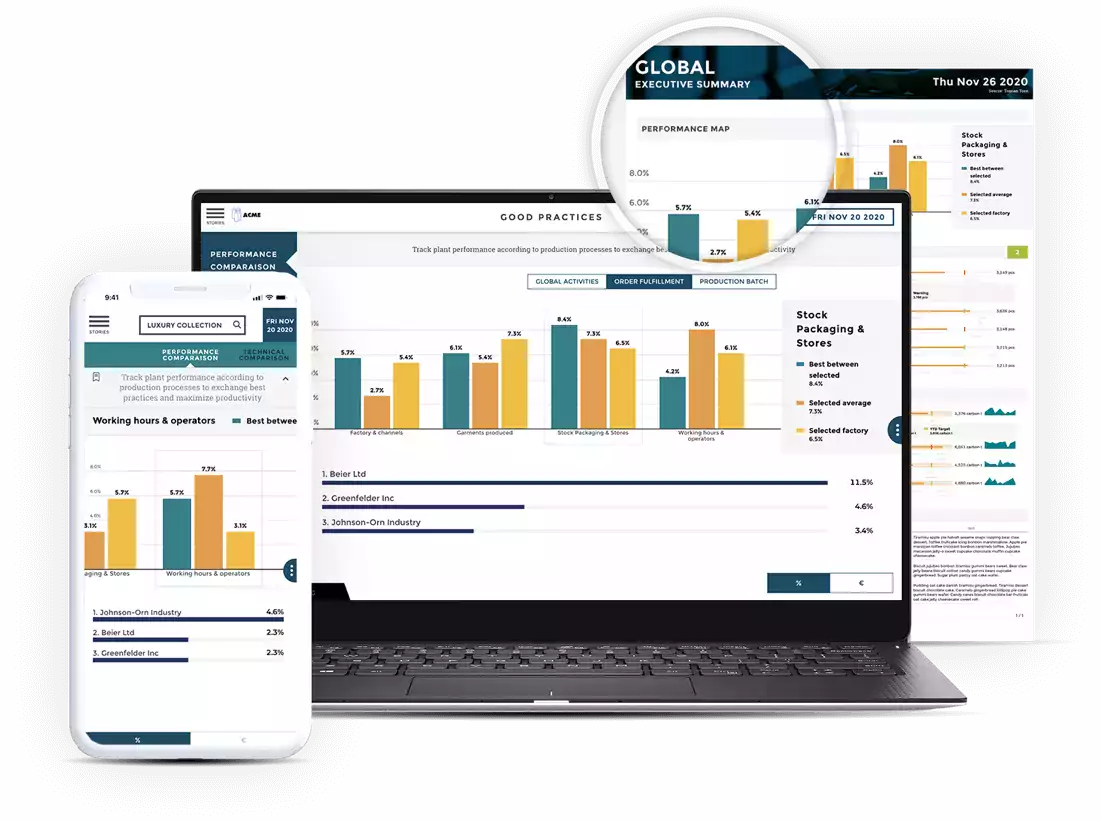%20(600%20%C3%97%20350%20px).png?width=800&name=Blog%20Banner%20for%20Website%20Content%20(2240%20x%20960%20px)%20(600%20%C3%97%20350%20px).png)
With the growth in corporate data over the past couple of decades, management has prioritized the role of data in its biggest decisions. Because data’s importance has skyrocketed, newer generation BI tools are on the hunt to solve their predecessor's biggest flaws:
- Inaccuracy
- Inaccessibility
- Complexity
These hurdles to financial reporting disrupted the processes of countless firms, who ended up discarding their data stacks altogether. In this day and age, businesses cannot afford to operate without data and the insights it provides.
Ad hoc reporting, or "reporting as needed," can distribute a workload of empowerment among employees of all experience levels by providing the insights they need to make the most-informed, proactive decisions possible.
What is Ad Hoc Reporting and why is it important?
Ad hoc reporting is a process that entails reporting on an “as-needed” basis. Unlike the regular quarterly reports, ad hoc reports are usually implemented for one-time use cases and answer specific questions.
For example, a SaaS company has seen a 35% decrease in subscribers in the span of a month. This company would then launch a report in the marketing and sales departments to find the cause of this disproportionate decrease in revenue.
Today’s world demands instant answers to problems, and delayed solutions can cost businesses millions. Traditional financial reports don’t meet those expectations, with data professionals taking days to assemble insightful reports.
Ad hoc reporting fills in the gaps, delivering rapid insights to business professionals tackling pressing and unexpected problems.
IT professionals also stand to benefit from the implementation of ad hoc reporting. Rather than tackle multiple ad hoc reports on a monthly basis, IT departments can focus on the health of their firm’s servers and tech health.
What is Ad Hoc Reporting Used For?

Ad hoc reporting is used to financially analyze how a business is performing at any given point in time, affording a competitive edge to firms implementing it. Many of the most successful companies utilize ad hoc reporting to navigate difficult periods and resolve spontaneous problems.
Here are some of the most common ad hoc reporting use cases across different industries and departments.
- Retail: Ad hoc reporting is essential in retail, where more frequent reporting can help businesses make smarter inventory predictions and prevent dead stock. Real-time ad hoc reporting tools have the capability to inform management of significant or unexpected downturns. Paired with other analysis tools, management can then discern the reason for inventory struggles and act immediately to prevent a landslide.
- Human Resources: Ad hoc reports can diagnose any issues with worker satisfaction, morale, and performance, allowing human resources professionals to quickly diagnose and solve any potential issues. Human resource departments are collecting more data than ever, including but not limited to:
- Safety incidents
- Payments
- Benefits information
- Performance information
- Finance: Ad hoc reporting is crucial to the performance of finance departments. Take, for example, the current forecasted recession and rising prices. Ad hoc reports can tackle the current financial situation of firms, which are currently experiencing high employee turnover and skyrocketing prices. Profitability of new products or services also demands ad hoc reporting, informing a firm whether goals are being met.
- Healthcare: The healthcare industry is among the highest users of data. The COVID-19 pandemic has only strengthened data’s role in the space. Although physicians are not data analysts, high upticks in infections, patients, and readmission rates require hospitals to diagnose the reasons for these problems. Hospitals and health facilities can then make more informed decisions about patients, leading to better care.
- Sales: Contrary to public opinion, sales are a science. Top firms are fighting to acquire the most experienced and data-driven sales specialists to drive growth. Ad hoc reporting can provide sales executives outlook on team performance, shortcomings, and strengths, allowing them to adapt and improve.
Benefits of Ad Hoc Reporting

Data is reaching its highest levels of importance since its inception, and its adoption is projected to grow rapidly within the coming decades. However, technology is still catching up to data’s forecasted role in business, meaning that corporations will struggle to manage their databases and data stacks. Implemented ad hoc processes can benefit a business in the following ways:
- Efficient decision-making: In our current world, important changes occur rapidly, meaning that adaptation is key. Big data solutions don’t currently offer much in the field of flexibility, but data visualization platforms are offering enticing ad hoc reporting solutions for companies looking to increase flexibility and adaptability.
- Data inclusion: Gone are the days of management accessing data and keeping it close to their chests. Today’s management includes relevant team members in upward or downward trends in KPIs. Ad hoc reporting tools offer this functionality, allowing for multiple users and collaboration at any time.
- Performance: The beauty of ad hoc reporting tools lies in their simplicity and performance. The best in the industry allow any professional, regardless of data expertise, to access data and reports in real-time.
Challenges of Ad Hoc Reporting
Although revolutionary technology exists, each comes with its own set of challenges. Ad hoc reporting tools are clearly improving business operations for executives; however, it is important to be aware of potential challenges before investing in a solution:
- Over-simplification: Management that sets their eyes on a data visualization tool may forget about the benefits of a traditional BI tool. The key to success is balance, with both tools serving their specific purpose.
- Lack of Training: Although ad hoc reporting tools are easier to grasp for less experienced professionals, training is still a requirement. Managers operating the tool must undergo an onboarding process and apply a concerted effort to understand the platform. Without the proper training, managers may grow impatient with subpar results and their inability to harness the tool’s full potential.
- Inconsistency: For an ad hoc process to reach its full potential, everyone needs access to the same databases. Ad hoc reports will yield inconsistent results if data sets vary throughout an organization, leading to a delay in generating insights.
The Solution for Ad Hoc Reporting
With so many options for ad hoc reporting tools on the market, it can be challenging to know which one will provide a net positive to your data stack.
Toucan’s embedded analytics caters to specific use cases for several industries, carefully tailoring its applications to the requests and needs of a client. With rapid app deployment, Toucan’s real-time KPI tracking is extremely useful for businesses looking to keep constant tabs on operational and financial statistics.
Mobile optimization also caters to business professionals on the move and simplifies complex data sets to tell a firm’s data story.
Data visualization is the way forward for ad hoc reporting. Data is only growing in importance, and when used correctly, ad hoc reporting opens the door for improvement, growth, and profitability.



